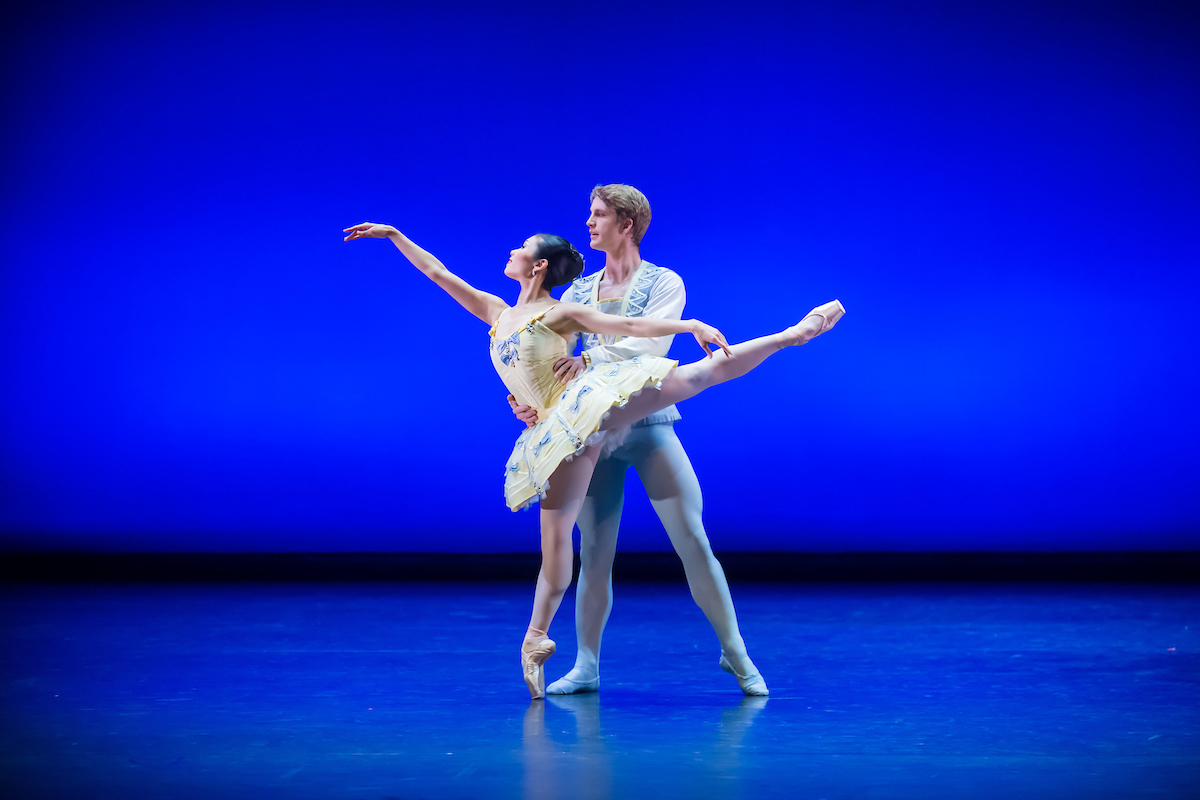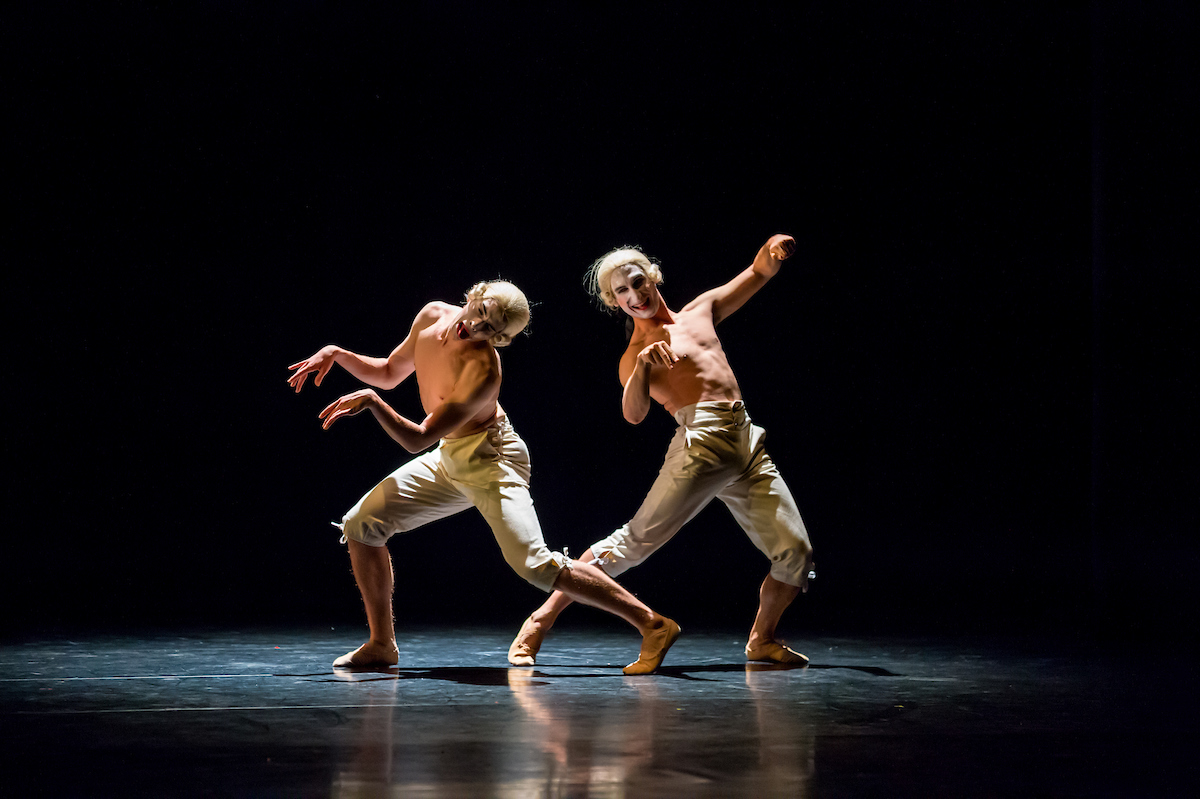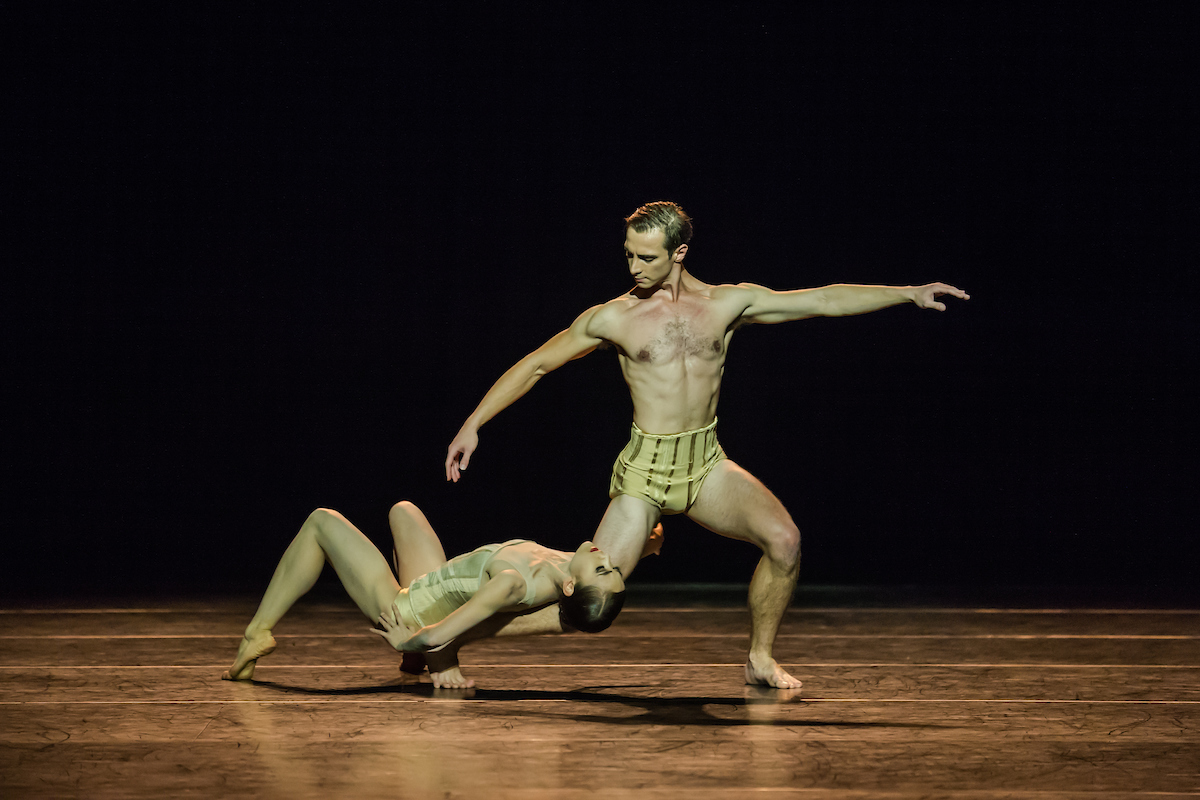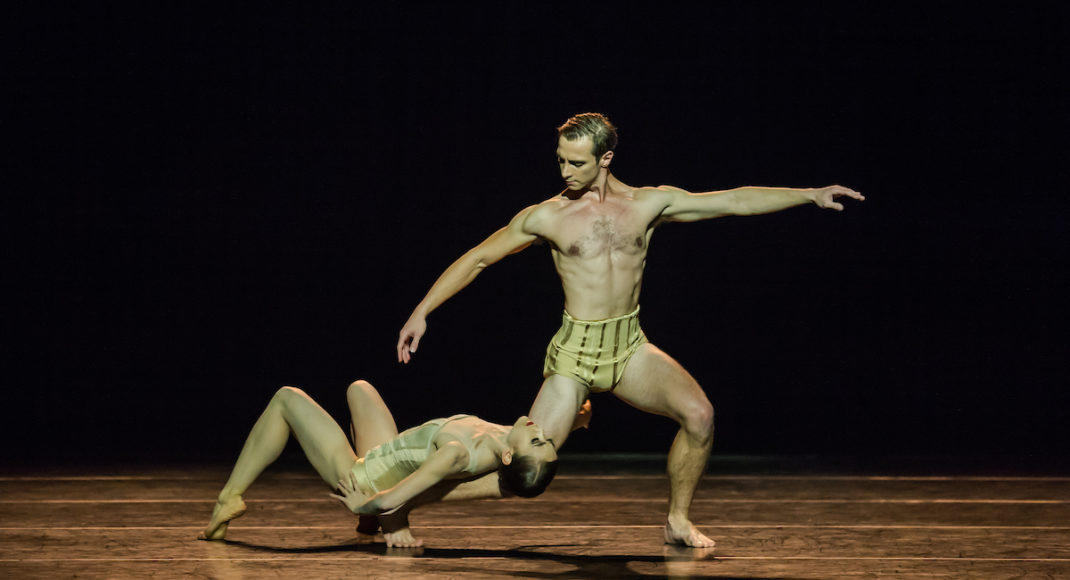31 May 2018, Opera House, Wellington
Reviewed by Jennifer Shennan
Ballet companies anticipate repertoire and book programs in long to mid-term time frames. Perhaps for that reason, the four works in Dancing with Mozart sit somewhat unevenly. The opening Balanchine Divertimento No. 15, and a newly commissioned work were the choices of the current artistic director, whereas the two Kylián works, Petite Mort and Sechs Tänze were chosen by the previous artistic director some time ago.
My guess is that Mozart would have found the Divertimento No. 15 somewhat laboured, with its numerous unmotivated entrances and exits, delivering the patterns that are its only content. I am not against patterns per se, in truth I love them if they are danced with élan and clarity, when they can represent all manner of things. In this work, however, there is little hint of meaningful rapport between dancers, and no development of a relationship to the audience, so zero effect of theatre from this extended piece.

The use of guest stars who are of varying aesthetic is hard to understand when the company has so many fine dancers, or until very recently did have, within its ranks. Mayu Tanigaito and Alexandre Ferreira save the day in their brief solos when with sparkling nonchalance they mask the effort involved in the demanding virtuosity.
This is the only work on the program played by Orchestra Wellington. Recorded music is used for the two Kylián works, evidently as required by the choreographic contract, but that is not made clear in the marketing of the season and has caused some upset reactions among those who booked to attend expecting live orchestra throughout.
The Corey Baker commission, The Last Dance, is a challenged work—no aspersion on the dancers who give it their best, but its ideas and images seem oddly static. All new choreographic challenge has to take risks and no one can guarantee the outcome, but whoever commissions and whoever choreographs needs to know a company’s strengths and production values as starting points. A pick-up group of dancers may have been a better choice for this project. It gives me no pleasure to report that it is the least appropriate use of Mozart’s Requiem that I could imagine.
How grateful we are then for some real choreography that claims space and gives dancers the moves they need to show the complexity and ambiguity, the serious, the strong and the playful options available to those of us who want to recognise life celebrated in dance. Both Kylián works, Petite Mort and Sechs Tänze, would have pleased Mozart no end, alive as they are with vitality and madcap, laced with wicked wit and the spin of genius. Every image and every move is deliciously carved and carried, suggestive and sensual, teeming with nuances from the choreographer’s rich train of thought.

Both these dances, performed by Nederlands Dans Theater, are on YouTube, with Stephan Zeromsky, who has so ably staged the works here, in that cast. The fact that you can watch on Youtube is no reason to stay away from a live performance. But it does give you and me the real and rare chance to study the works in all the depth and detail that repeat viewings allow. Kylián’s personal website also offers much insight into his remarkable career, prolific choreography, and his haunting muse.
I also welcomed several memories that this season triggered—for starters, during Ashley Killar’s term here, probably the definitive Balanchine work ever seen in this country, Agon, exquisitely performed by Ou Lu and Amy Hollingsworth. Pure Balanchine at his best.
Another treasured memory is Harry Haythorne’s beautiful staging of Balanchine’s Serenade on the New Zealand School of Dance in 1984. (It is a little known but fascinating fact that Haythorne was the first person to script Serenade into Laban Notation. The original score held in the Dance Notation Bureau in New York carries his signature, H.H., in the bottom corner. Dance history is a mercurial creature).
None of us is likely to forget Kylián’s masterwork Soldatenmis/Soldiers’ Mass, to Martinu’s Mass of the Unknown Soldier, which has been twice so brilliantly staged by RNZB, during Matz Skoog’s and again during Francesco Ventriglia’s directorates. The work throbs with the urgency and pain and horror and courage required in battle. It demands extraordinary stamina. Every male dancer in the company is cast. If one injures there is no recourse but to bring in the strongest female dancer in the company to replace him. In the first season that was Pieter Symonds. I wrote at the time this was the night Joan of Arc came to town—and Pieter has used that epithet in her cv ever since. In the most recent season, another male dancer injured, and Laura Saxon-Jones was brought in to replace him. I wrote then that Joan of Arc had returned to town. Laura’s fine dancing, and her own spunky choreography that we have seen in two of the Harry Haythorne award seasons, are much missed from the company’s ranks.
Back to 1991 and there was something!—the full-length Wolfgang Amadeus, the life and work of the composer, choreographed by Gray Veredon, combining story, drama, poetry, comedy and heartbreak. RNZB seasons were longer then, spanning two weeks, so we had more chance for repeat viewings. The entire celebratory work was accompanied by live orchestra, and the Requiem sung by live choir, with singers crowded into the boxes to the sides of the stalls and circle levels. Eric Languet danced Wolfgang. Jon Trimmer played his father, Leopold. Who could forget them? Dance history might be mercurial but it is also tidal, and never dies completely.
Jennifer Shennan, 4 June 2018
Featured image: Katherine Minor and Fabio Lo Giudice in Petite Mort. Royal New Zealand Ballet, 2018. Photo: © Stephen A‘Court


It’s so wonderful to be able to read a critic of a premier dance performance by the Royal New Zealand Ballet that presents such a deep understanding of the traditions that make up the rich background story of this wonderful dance company. At this moment in time it is doubly important as these values become more and more threatened by the current situation in which the company finds itself.
We are very fortunate to have Jennifer Shennen who time and time again steps up with courage and understanding to defend the values and cultural identity that has grown and flourished over the years to make this company of individual talents such a pillar of importance in the cultural landscape of New Zealand.
Thank you for your comment, Gray. Jennifer’s reviews always give us a great context for, as well as a strong analysis of, the production she is reviewing.